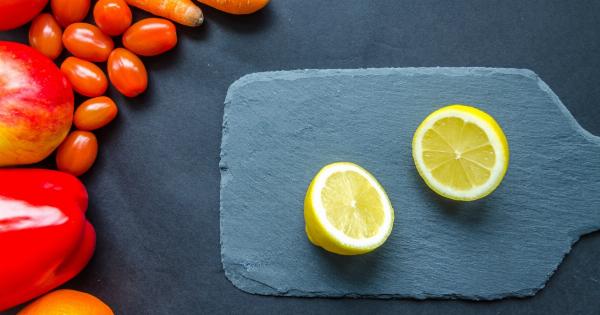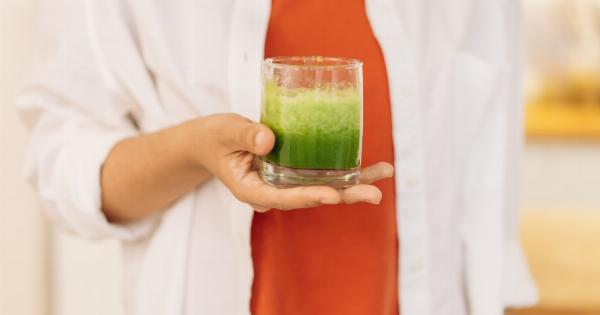When it comes to consuming fruits and vegetables, many people tend to peel them before eating. However, peeling these natural gifts from nature can have its drawbacks.
While some fruits and vegetables are better off peeled due to their outer layer being hard or inedible, there are many reasons why you should consider keeping the peels intact. In this article, we will explore the benefits of consuming fruits and vegetables with their skin on.
The Nutritional Value of Peels
Fruits and vegetables are loaded with essential vitamins, minerals, and fiber, and their peels usually contain a significant portion of these nutrients. For instance, the skin of an apple contains a large amount of fiber, antioxidants, and vitamins.
By peeling it, you are stripping away these vital nutrients and limiting the health benefits of the fruit.
Similarly, potato peels contain a good amount of fiber, potassium, and vitamin C. By leaving the skin on, you enhance the nutritional value of this starchy vegetable.
The same goes for carrots, cucumber, and many other fruits and vegetables that possess valuable nutrients in their peels.
Enhanced Fiber Intake
Fiber is an essential component of a healthy diet as it aids in digestion, promotes a feeling of fullness, and helps prevent constipation. When you peel your fruits and vegetables, you are significantly reducing your fiber intake.
The skin of these natural foods is often rich in insoluble fiber, which adds bulk to the diet, keeps your digestive system healthy, and supports regular bowel movements.
By consuming fruits and vegetables with their peel, you increase your fiber intake, promoting better digestion, and overall gut health.
Protection Against Chronic Diseases
The peels of various fruits and vegetables offer protection against chronic diseases thanks to their high concentration of antioxidants.
Antioxidants are compounds that help neutralize harmful free radicals in the body, minimizing oxidative stress and reducing the risk of various diseases.
For example, citrus fruit peels, like orange or lemon peels, contain a potent antioxidant called limonene, which has been found to possess anti-inflammatory and anti-cancer properties.
By including these peels in your diet, you can unlock their disease-fighting potential.
Improved Digestion
Consuming fruits and vegetables with their skin on can aid in digestion. The skin contains indigestible fiber that acts like a natural scrub for your digestive system.
This roughage helps sweep out waste and toxins, keeping your gut clean and promoting a healthy digestive system.
Moreover, the skin of certain fruits and vegetables, such as grapes, contains natural probiotics that support the growth of beneficial bacteria in the gut.
These bacteria play a crucial role in maintaining a healthy gut flora, which is essential for proper digestion and overall well-being.
Reduced Food Waste
Peeling fruits and vegetables leads to unnecessary food wastage. According to the Food and Agriculture Organization (FAO) of the United Nations, approximately one-third of all food produced globally is wasted.
By consuming the peels, you can contribute to reducing food waste and promoting sustainability.
Additionally, when you buy produce and consume them with their skin on, you make the most out of your investment as you get to enjoy the full nutritional benefits of these natural foods.
Flavor and Texture
Peels can add extra flavor and texture to your dishes. Many fruits and vegetables have distinct flavors in their skin that can enhance the overall taste profile.
For example, leaving the skin on when making mashed potatoes adds a pleasant earthy taste to the dish.
Incorporating fruit peels into smoothies or salads can also amplify their taste and provide an interesting texture. Experimenting with recipes that utilize the entire fruit or vegetable, including the peel, opens up a world of culinary possibilities.
Organic and Pesticide-Free
If you opt for organic produce, the skins are particularly valuable. Organic farming practices generally avoid synthetic pesticides, making the peels safer to consume.
On the other hand, if you choose conventionally grown fruits and vegetables, peeling can help minimize your exposure to pesticide residues. However, thoroughly washing and scrubbing the produce before eating can also be an effective way to remove some traces of pesticides.
How to Safely Consume Fruits and Vegetables with Their Skin
While keeping the skin on your fruits and vegetables can be beneficial, it’s important to remember a few key points:.
1. Thoroughly wash the produce: Make sure to wash the fruits and vegetables with water to remove any dirt, bacteria, or pesticide residue that may be present on the skin.
2. Buy organic when possible: Organic produce is generally a safer choice if you prefer eating fruits and vegetables with their skins.
3. Remove wax coatings: Some fruits, like apples and cucumbers, are often coated with wax to extend their shelf life. It’s best to remove this wax coating before consuming, especially if it is not organic.
4. Consider food allergies: If you have any known allergies to fruit or vegetable skins, it is essential to consult a healthcare professional before consuming them.
By following these guidelines, you can confidently enjoy the benefits of consuming fruits and vegetables with their skin on.
Conclusion
While personal preference and certain fruits/vegetables may require peeling, overall, there are numerous advantages to consuming fruits and vegetables with their skin on.
From increased nutritional value and enhanced fiber intake to protection against chronic diseases and improved digestion, these natural peels offer a range of benefits. Embracing the practice of eating your produce with the skin intact not only supports your own health but also helps reduce food waste and promote sustainability.




























